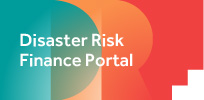By: Lara Mani, Asaf Tzachor & Paul Cole
Globalisation supports the clustering of critical infrastructure systems, sometimes in proximity to lower-magnitude (VEI 3–6) volcanic centres. In this emerging risk landscape, moderate volcanic eruptions might have cascading, catastrophic effects. Risk assessments ought to be considered in this light.
Within the volcanic risk literature, the typical focus of attention for global-scale catastrophes has been on large-scale eruptions with a volcanic explosivity index (VEI) of 7–81,2, which remain relatively rare3. The relationship between volcanic eruptions of this scale and global catastrophic risks (GCRs) – events that might inflict damage to human welfare on a global-scale4 provided rationality for this tendency. We define this correlation as a ‘VEI-GCR symmetry’, whereby as the magnitude of an eruption increases so too does the probability of a GCR event. The eruption of Tambora in 1815 (VEI 7) is an example of the mechanism that governs the VEI-GCR symmetry, in which a large release of sulfur into the stratosphere brought about periodic global cooling, widespread frosts in the northern hemisphere, and crop failures across Europe5,6. This VEI-GCR symmetry has historically defined society’s relationship with volcanoes. Indeed, we have often failed to consider lower-magnitude VEI eruptions as constituting GCRs.
Here, it is argued that this symmetry has become imbalanced towards ‘VEI-GCR asymmetry’, driven by clustering of our global critical systems and infrastructures in proximity to active volcanic regions. Critical systems and infrastructures, such as shipping passages, submarine cables, and aerial transportation routes, are essential to sustain our societies and to ensure their continued development7,8. We observe that many of these critical infrastructures and networks converge in regions where they could be exposed to moderate-scale volcanic eruptions (VEI 3–6). These regions of intersection, or pinch points, present localities where we have prioritised efficiency over resilience, and manufactured a new GCR landscape, presenting a new scenario for global risk propagation.

